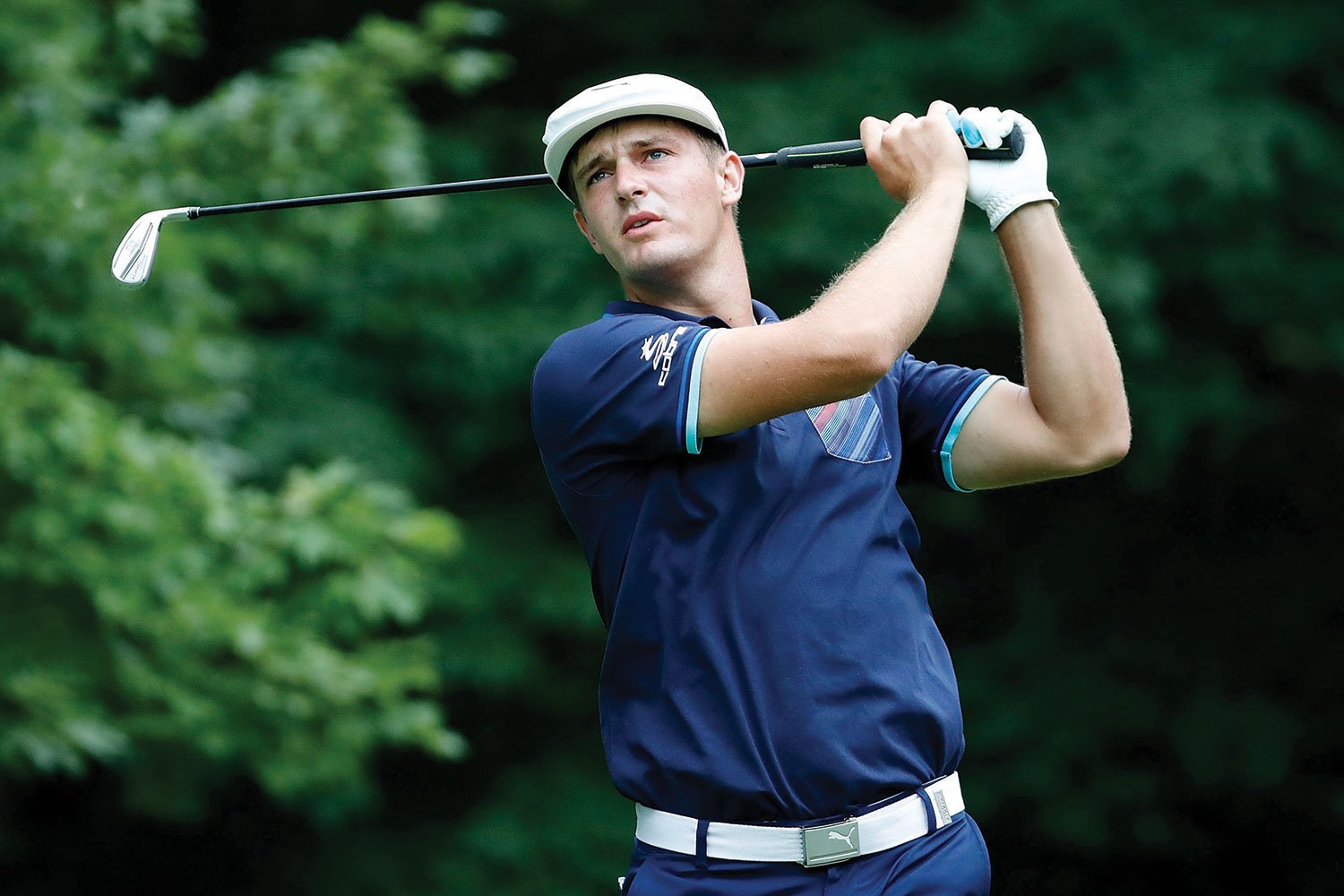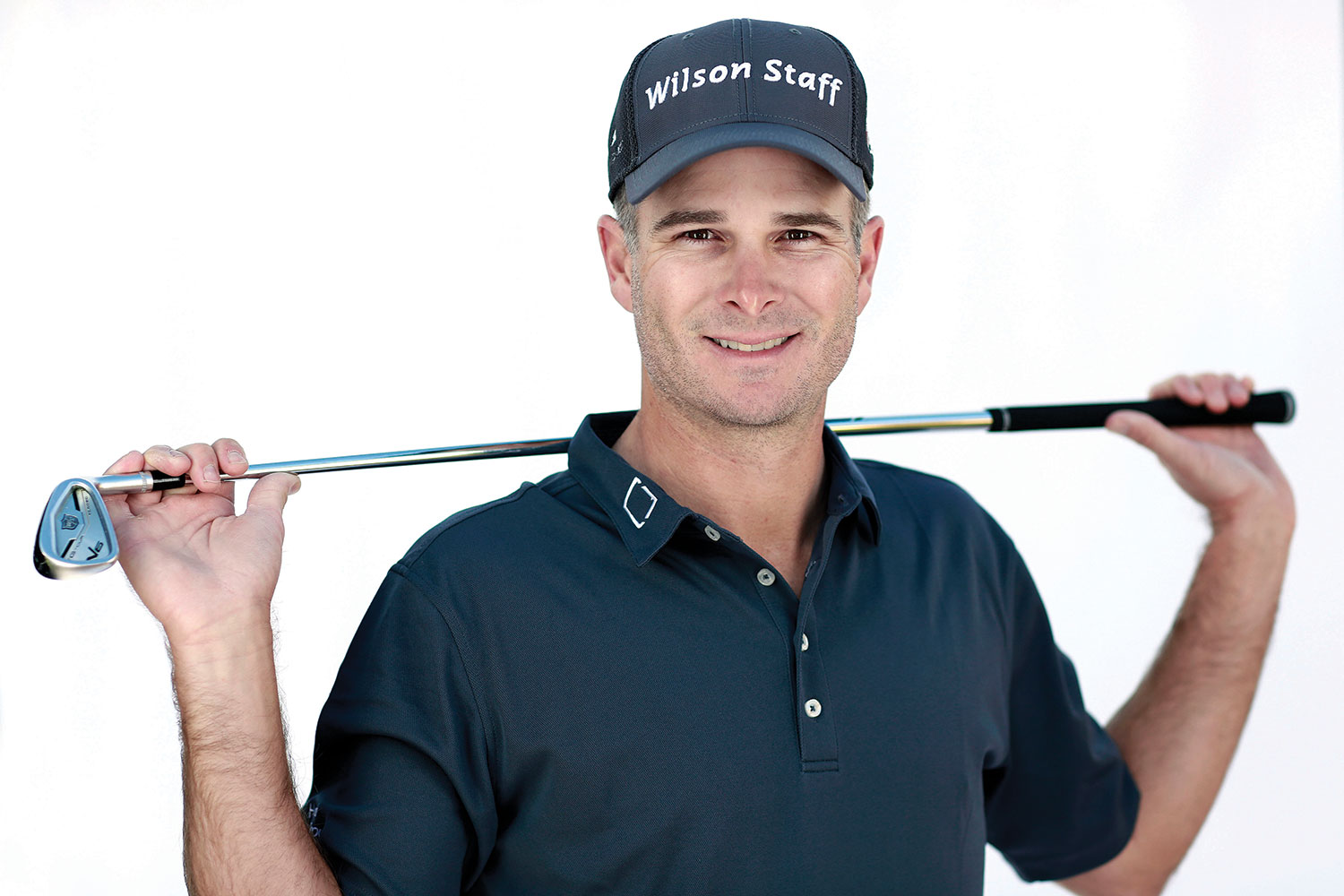IN AUTUMN of 2011, golf statistician Peter Sanders arrived, briefcase in hand, at a house rented by Zach Johnson in St Simons Island, Georgia.
At Johnson’s invitation, Sanders was to show trends and anomalies buriedamid Johnson’s 600-plus performance stats measured by the US PGA Tour’s ShotLink system. Then, incorporating measures of his own creation – the “secret sauce”, as Sanders puts it – he would recommend playing and practice strategies that would give Johnson and his seven-member team an edge as he entered the midway point of his career.
“My presentation began at 8pm,” says Sanders, the founder of shotbyshot.com, a statistics-analysis firm that serves tour players as well as golf instructors, coaches and amateurs. “At midnight, I was still answering questions.”
Johnson, it turned out, liked stats homework. He enrolled at Drake University in 1994 aspiring to be an actuary, and upon turning pro and joining the mini-tours after graduation, tracked what numbers were available. When he hooked up with teacher Mike Bender in 2000, he found a man who was even more analytical than he was.
When Sanders came on in 2011, the team became among the first to weaponise performance stats.
Johnson, 41, almost cheerfully confesses to being a light hitter. His driving-distance average this year of 286.5 yards ranks equal 141st on tour. But Johnson also is accurate, ranking in the top-10 in driving accuracy for eight of the past 11 seasons. He argues that it’s a decent trade-off. “If you put me in the fairway at 170 yards, I’ll wear out the guy who is 110 but in the rough,” he says. Adds Sanders: “Every player on the PGA Tour averages under par when playing from the fairway. That applies even to players who miss the cut.”
So Johnson knows his focus must be the fairway. To support this, Sanders has one-upped ShotLink by factoring in the severity of Johnson’s misses. Drives are broken down to consider whether he was able to advance the ball normally, if he incurred a penalty for driving into a hazard or unplayable lie, or if the ball was lost or out-of-bounds. “It’s part of the secret sauce,” Sanders says.
Every week, Sanders sends the team a report card noting performance highlights, lowlights and trends. Early in 2012, Sanders emailed Bender that Johnson had fallen to 87th in strokes gained in putting. “We’ll fix that,” Bender replied. Within a month, Zach won at Colonial, won again at the John Deere and by late May had risen to No.1 in that stat.
Central to the varied putting measures is three-putt avoidance, which on the surface seems too broad for meaningful takeaways. But Sanders has created a unique equation of three factors: (1) distance of the first putt; (2) distance of the leave – the length of the second putt; and (3) whether the first putt reached the hole. Sanders says reaching the hole with the first putt is key because the player obviously will hole more long ones. He also notes that Johnson’s superb distance control means fewer three-putts even if he occasionally scoots the first putt four feet by. Johnson is better than tour average in three-putt avoidance, and in 2015, the year he won the British Open at St Andrews, he ranked eighth.
At that initial meeting in 2011, Sanders suggested that Johnson, who has always excelled with his wedges and won the 2007 Masters despite not going for any par 5 in two, bomb away with his second shot on the par 5s rather than lay up to his pet distances. This brought a spirited protest from Damon Green, Johnson’s caddie, who knew well his player’s skill from 70 to 100 yards. He relented only after Sanders installed a caveat to his advice. “I told them, if the green complex has a lot of danger, like the water on 13 and 15 at Augusta, by all means he should lay up,” Sanders says. “Otherwise the stats say he should go for it, because the quality of his short game is such that he’ll be closer to the hole after a pitch or bunker shot than he’d be with a wedge from 70 yards.”
Then there’s where he plays. An examination of Johnson’s results reveals that in his 14-year career, he has played Pebble Beach and Torrey Pines only three times each. “I love those courses,” Johnson says. “But you can’t play everywhere, and I leave them off because I don’t putt very well on Poa annua greens.”
Sanders has included grass types when compiling his year-end presentations for the team, and Bender considers even more course-related factors. “If you look at Zach’s history, his wins have come mostly at tournaments where the winning score is 15-under par or better,” Bender says. It’s true; all but three of Johnson’s 12 tour wins were on shorter, faster layouts where he’s likely to have his deadly wedge in hand more often than a middle iron. “Zach is very aware of this,” Sanders says. “One challenge is the trend towards courses being stretched out. Choosing courses that suit Zach’s strengths can be a challenge.”
As time passes, there are fewer surprises in Sanders’ reports. And as telling as the revelations are, Johnson is quick to say that stats are but one piece of a larger picture. “First and foremost, I’m an athlete and a competitor,” he says. “Stats are not the be-all, end-all. There’s conditioning, diet and equipment. There’s mental toughness, which can’t be measured. There comes a point where I set the stats aside and go play.”
For now, Johnson and his team go forward hoping to receive a note similar to the one Sanders delivered after the John Deere Classic in 2015. “Zach missed a 15-foot putt to get into a playoff won by Jordan Spieth,” Sanders recalls. “After looking at his stats, I sent the team a note that read, ‘No report card this week. Zach’s game is firing on all cylinders. Go get ’em!’ The Open at the Old Course followed the next week. Zach won.”
Bryson DeChambeau
Looking at the golf swing as a geometry problem
Bryson DeChambeau hammers a “roasty tater bomb” into a glaring Texas sky, the ball ending up a tiny dot 310 yards in the distance. Shifting to a higher gear, he launches what he calls his “Kareem Abdul-Jabbar”, a towering shot suggestive of the NBA Hall of Famer’s legendary skyhook. They’re evidence that DeChambeau, who is 23 and won the John Deere Classic in this his rookie season on tour, is making progress on his latest quest: more distance with no loss of accuracy.
Soliciting the “how” from DeChambeau on the science of these shots is difficult, with the furious pace of his speech and advanced terminology. He mentions “power accumulators”, “triangle assembly” and “zero shifting plane”, terms from the enigmatic instruction book The Golfing Machine, which he has studied since he was 15. He talks about “thoracics” as the examination of muscle movement and “proprioception”, which means trying to make efficient body movement second nature.
We can barely keep up. DeChambeau is pursuing perfection using an astonishing number of tools that produce every measurement conceivable – of the club and his body, both static and dynamic. He uses the MySwing system, which has 18 body sensors and gives feedback in 3-D. He took part in the Muscle Activation Techniques program to make his training safer and to improve his understanding of anatomy. He tracks his swing on a FlightScope launch monitor and uses the Quintic Ball Roll system, a launch monitor for putting – yes, putting – that produces detailed data on impact and roll dynamics on the greens.

The pull of data has led DeChambeau in many directions. Between smashing driver shots, he describes what he’s working on now. “I’m basically doing two things: I’m increasing my wrist flexion to apply more force, and I’m trying to return the club to impact with the shaft as straight as possible.”
DeChambeau breaks it down further.
“At the top of the swing, the shaft bends,” he explains. “Halfway through the downswing, the shaft recovers and bends in the opposite direction. That’s called ‘lead deflection’. Then it starts to bend the other way again, three times in all. What I’m trying to do is unload the club and move my body so at impact the shaft is ‘intrinsic’. That means straight.”
Why is DeChambeau obsessing over shaft deflection? Michael Neff, the director of Gears Golf and Sport Development, measured DeChambeau in January using a Gears analysis system that evaluates not only the golfer but the precise behaviour of the club. It showed, indisputably, that at impact DeChambeau’s driver shaft had 42 millimetres of lead deflection. By comparison, Rickie Fowler, one of the tour’s top drivers, had only 27.9mm. DeChambeau saw a definite need to address the issue.
“I think what Bryson is really talking about is whether the clubhead is accelerating or decelerating at impact,” says Mike Schy, who has been DeChambeau’s instructor since Bryson was 12. “He wants the club to be accelerating correctly when it meets the ball, no sudden bursts of speed and no extra kick from the shaft. Above all, we don’t want to see any deceleration.”
Neff confirms DeChambeau’s deflection number is on the high side, the result of releasing the club relatively early in the downswing. “When you ‘crack the whip’, or begin to throw the club into impact, the hands slow down as clubhead speed increases,” Neff says. “The earlier you throw, the greater the shaft deflection. Bryson’s hand speed at hip high is 22 miles per hour. David Toms, a short but accurate driver, achieves the same 22 miles per hour, but it comes closer to impact. Toms has the lowest shaft deflection on tour.”
DeChambeau recognises the challenge of trying to tune his release through impact to the shaft deflection. “I know what I do in my swing, but in a sense I don’t know,” he says. “When I release the club, does it happen because I’m consciously telling it to, or is it unloading naturally?
“In terms of the big picture, I feel like I’m 95 percent of the way there, but there’s that last 5 percent still to go, which is actually
a lot. It’s about being conscious through the whole swing, which is a different level of brain functionality.”
“I hope Bryson shares that last 1 percent with me when he gets there,” Schy says. “I don’t think anyone knows for sure what it is.”
Kevin Streelman
Making every club earn a spot in the bag
If you’re meeting Kevin Streelman for a guided tour through his bag, you might consider bringing a lunch, not to mention a slide rule and calculator. He presents each of his 14 clubs in tech-rollout fashion, the specs numerous and sometimes obscure.
“I’m Type B about everything except my equipment,” says Streelman, 38, a two-time US PGA Tour winner. “When it comes to my clubs, I’m Type A, super-technical and very left-brained. It’s probably the one thing in golf I have complete control of.”

hands-on technophile.
For his driver, Streelman uses a shaft-testing machine that spews out 100,000 data points. He alternates between two: a Ping G and a Wilson Triton he helped evaluate while serving as a panelist on Golf Channel’s “Driver vs Driver” TV series. He grinds his Wilson FG Tour irons to obtain a special sole camber that glides through the turf better. He shortened the shaft of his Scotty Cameron Newport 2 putter from 35 inches – Streelman says that’s an arbitrary measure that manufacturers came up with so the putter would extend above the rim of a golf bag – to 33½ inches. Streelman did this after he considered that his legs are kind of short and that the putter length should reflect his 28-inch inseam.
That’s typical of Streelman’s eye for peculiarity and detail. It’s especially true with his three Wilson FG Tour PMP wedges. His desire for precision in the scoring clubs begins, curiously enough, not with his clubs but a spool of thick synthetic line 25 yards long that he carries in his bag. The line is tagged with duct-tape markers at three-yard increments. When he practises, he stretches it out in the 75-to-100-yard zone and fires away at specific tags, seeing how close he can come to the best statistical measures on the US Tour.
To pre-set precise distances, Streelman installed a Project X 6.5 shaft in his 46-degree wedge – good for shots outside the 100-yard range – but opted for True Temper S400 shafts in the other two. He weighs each shaft before installation, checking that it’s 125 grams, as advertised. He makes sure they’re exactly 35 inches long and that the grip is a .580 model, with only a single wrap of tape to suit his hand size.
Those are just the basics. Streelman, who haunts tour equipment vans and seeks out leading clubfitters in his travels the way some people frequent museums, then shifts to a higher gear. At home in Arizona, he calls in “the best club guy in the world”, a club builder named Aaron Valdez, who manages the build shop at Cool Clubs.
Valdez makes his most complex adjustments to Streelman’s 46-degree wedge, which Streelman replaces, like all his wedges, several times a year. A 46-degree is normally classified as a pitching wedge, but Streelman wants some of the characteristics of a sand wedge, so he has Valdez bend a 48 to 46. This reduces the club’s bounce angle – the pitch from the leading edge to the bottom of the sole – so they start with a lot of bounce, 14 degrees. Valdez grinds off metal from the heel and sole so the leading edge is not elevated when Streelman opens the face, then restores the weight with lead tape. The result is a wedge that neither digs nor bounces too much.
Streelman’s 52 and 58-degree models also are modified to perform from certain distances and situations. His 52-degree ends up with 12 degrees of bounce, which is a lot for a tour player, and his 58-degree has an especially wide flange, five-eighths of an inch. This improves what Valdez calls “sole interaction” and particularly helps Streelman slide the club through sand on bunker shots.
It’s tedious work, catering to the tour’s biggest gearhead, but Valdez is up to the task. “I keep Kevin’s exact measures on file,” he says. “But he also likes a certain overall look, a clean look, so I take a lot of photographs for reference. I don’t try to add special touches. There’s art in making something simple.”



